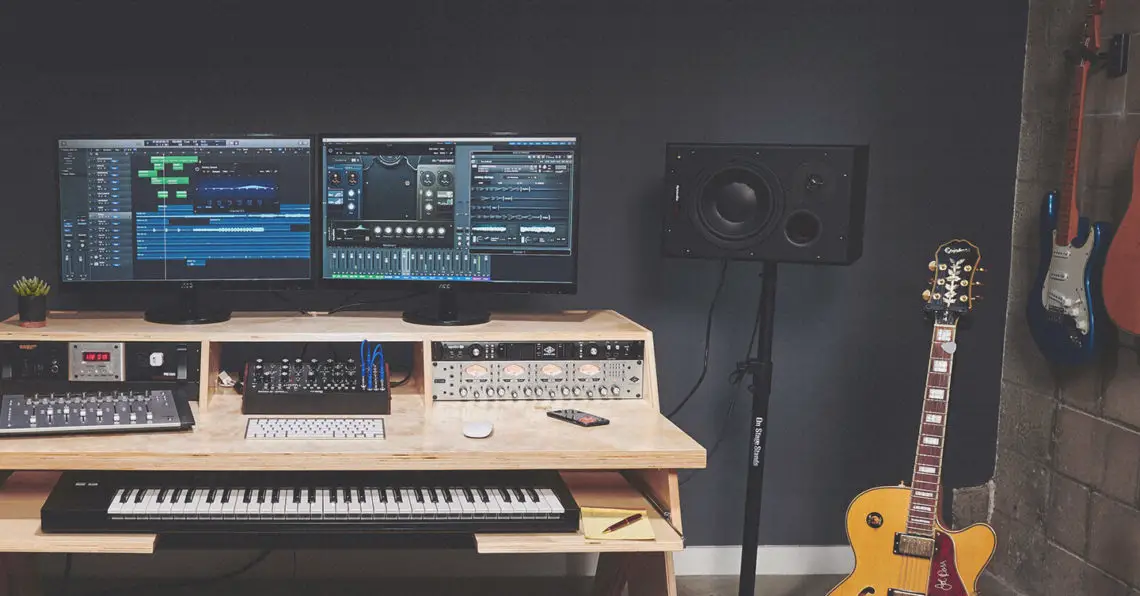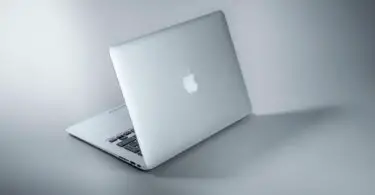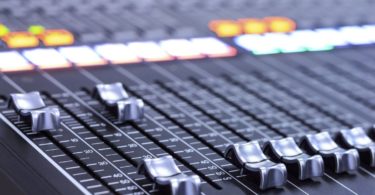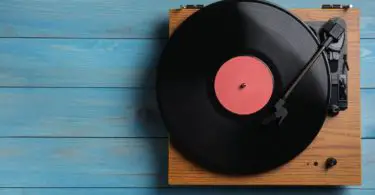Musicians are creative creatures who need the right environment in order to produce their best work. I should know, I’m one of those creatures. I’ve been writing songs and home-recording for over 15 years, I know full well that inspiration can strike at any time and having the right setup to capture those fleeting ideas is key to your success. I’ve gathered up invaluable advice and wise words from my recording engineer friend in England and Mickey Shiloh, the multi-platinum songwriter and recording artist from LA. Hey, I’ve even thrown in some of my own experience as well! I think it’s fair to say that I’ve got all bases covered and in the end, out of a shortlist of seven recommendations, the Studio RTA Producer Station came out on top as the best buy.
Common Questions About Studio Desks
Home recording is an ever-growing hobby. Musicians are writing and producing their own songs more and more these days. The potential of home recording equipment is huge and it’s easy to transform a bedroom or spare room into your very own DIY music studio. You just need to understand a few of the basics to make sure you start off on the right note!
A well-designed home studio starts with a desk or table, we can all agree that it’s not the most exciting part but it is an important part nevertheless. Just a quick search on the internet will throw up many options, ranging from standard office desks to fully custom-made options that will cost you literally thousands. A close friend of mine started out as a DIY home-recording musician, he set out to record his own band and then slowly, over time, he built up a successful business and is now a full-time recording engineer.
I asked him for some advice about why studio furniture is an important area to consider when starting out, his conclusive reply was, “It all comes down to workflow. We all have to start somewhere but being able to create an area that optimizes your workflow is going to be beneficial in the long run.” I questioned him further about the biggest advantage of using studio desks and his words definitely made sense to me, “Keeping everything within arms reach makes the whole music-making process run smoothly, not to mention a hundred times more fun!”, and that is logical when you think about it.
So, with those words in mind, I’ve put together an all-inclusive guide that will help you get to grips with this important yet often overlooked area of home-recording – the studio desk.
-
 $78.99Check on Amazon Check on Musician's Friend
$78.99Check on Amazon Check on Musician's FriendA good runner-up from Studio RTA, this a less expensive alternative to the Producer Station.
03/08/2024 09:34 am GMT -
 $289.95Check on Amazon Check on Musician's Friend
$289.95Check on Amazon Check on Musician's FriendA well-made, easy to assemble, and lightweight option.
06/29/2025 02:08 am GMT -
 Check on Amazon Check on Musician's Friend
Check on Amazon Check on Musician's FriendHas over 140 effects that built-in studio-style that improves your sound, and it is very intuitive containing a lot of recording options.
- Tabletop recorder
- Interface / Controller
- 2 xlr combo inputs 8 tracks
- USB audio interface
- Built in stereo condenser microphones
- Pad sampler
- Rhythm machine
Starting With The Essentials
It might seem obvious but before you go out and buy yourself a brand-spanking new studio desk, make sure you have the equipment to warrant the purchase! I’m sure most of you have the basics of home-recording ticked off already, things like a computer or laptop, DAW recording software, audio interface, monitors, mics, stands, cables, keyboard, MIDI controller, along with any relevant instruments that you intend to use.
You might not need all of these bits and pieces of equipment but it’s a very common setup that will get most people up and running. So, if you’re still in the process of buying everything then I suggest holding off on the desk purchase for now. You’ll have a much better understanding of how much space you will need once you have your final setup ready to go, putting you in a better position to buy the correct desk for your overall requirements.
Why Do I Need An Organized Home Studio Setup?
Before we dive into the finer details of studio furniture and how to optimize your recording setup. I would like to rewind back to an old saying that my father said to me about creativity, “you are a product of your own environment”, this rings true for me and the professionals that I have spoken to so far. We all agreed that a clutter-free space improves creativity and increases productivity.
I’m sure that you can picture the scene, a laptop on the bed, monitors propped up on a shoebox, instruments spread out across the floor and cables running everywhere. It’s the classic starter setup for most musicians. We throw ourselves into the deep end. We try to juggle all of our instruments and new equipment whilst trying to find and press the record button. It’s not exactly a picture that evokes calmness and creativity, is it?
Musicians need to be in the zone with minds solely on the music. You shouldn’t have to worry about stretching for the record button or wondering if you’ve forgotten to plug the cable in again. At the end of the day, you need some sort of organization in your setup that will give your creativity and music a chance to shine.
Studio Desk Size Is Everything
Assuming that you’ve got the home-recording essentials, it’s now time to measure the space where you intend to house your desk. Be sure to keep in mind all of the equipment that will be sitting proudly on top and tucked away underneath. Although it might be hard at this stage, I recommend that you try to factor in any future equipment purchases. A little extra space now is going to save you money and a lot of hassle further down the line when you start to expand your studio.
Is your desk going to be placed against a wall or in a corner? Or perhaps you’ve got a unique center room idea in mind. Whichever plan you decide upon, choosing the right desk shape is going to increase your workflow. You can find L-shaped desks for the corner and straight-back desks that fit snug up against a wall. Keep this in mind when planning out your setup because there will be a design for you. The right shape might seem obvious but it’s useful to know that there are different design options out there to choose from. If you’re looking for some inspiration then click here for some great home studio layouts.
Keyboards are one of the main factors when considering the size of your desk, for example, if you’ve got an 88-key, full-size keyboard then it’s going to take up a fair amount of the workspace. You will notice that some of the high-end desks include a retractable drawer that is designed to house your keyboard. It’s a great space-saver but be sure to check the size of the drawer and that it allows for a full-size keyboard to sit within it. A quick email to the customer service team of the manufacturer often helps to confirm any dimension or design doubts.
Are You Comfortable And Are You Ready For More?
As you start to build your home studio you will notice that some equipment is used more than others, which brings me to another important aspect of the studio desk size – the layout. It goes without saying that your desk and layout needs to be comfortable and organized. The best setups include monitor stands that are positioned just right for optimal sound performance and keyboard drawers that slide out smoothly, it’s often the little things that matter most. You’ll even find that some desk designs come with smooth, rounded curves that almost make you feel like you’re sitting at the front of a spaceship – check this design out from popular brand Studio Desk. It might sound funny but all of these little things make a difference. Your music will dramatically improve when you’re sitting comfortably with everything in place, trust me on that one.
Thinking about the future can be daunting at times but a little thought on your set up and potential upgrades will go a long way. The reason being is that many musicians get addicted to the music-making game and quickly grow out of their original set up, opting for more advanced equipment that often goes by the name of rack-mounted gear. Customizing a setup with improved audio interfaces and multi-channel preamps are common first upgrades, allowing for more power and potential in the recording process. Rack-mounted equipment is commonly stored in what is known as rack space – your new best friend when it comes to organizing your equipment!
High-spec desk options often include integrated rack space with an angled design either side of the screen. However, for those on a budget, rack space can also be offered as an add-on in the form of external drawers and cabinets, often used underneath or to the side of the desk. The main advantage of using rack space is that all of your equipment is systematically organized, offering quick access to the settings and features that you use the most.
So, if you are serious about turning your hobby into a professional career then make sure to plan ahead for rack space, either integrated or as add-ons. A little planning now will allow for a smoother transition from beginner to producer later on down the line! Fortunately, external rack space is an easy addition to buy, so don’t worry too much about it if you’re currently on the budget setup, but hey, at least you’re up to speed on what it is and how it can be used if you start to get more serious later on.
The main idea to take away here is that you should be proactive when it comes to your setup, your equipment will grow hand in hand with your experience. I have found that producers and musicians are picking up new equipment all the time, testing new gadgets and technology to find that sonic sweet spot! It’s all part and parcel of the game. Rack space and rack-mounted equipment is an excellent way to optimize and increase your workflow, be sure to keep it in mind when choosing your next desk.
Why Does Construction Material Matter?
One of the main advantages of buying a music studio desk over a standard bedroom desk is the durability factor. The construction materials in a desk made for music production is going to be a lot stronger and durable, purely for the fact that musicians and producers spend many hours sat behind these desks. They need to be strong and reliable to withstand the knocks and scrapes that they will no doubt encounter over the years. Plus, creating a strong design is paramount when you think of all the equipment that it needs to hold. I started out with a standard desk many years ago and it soon started to weaken as my setup started to grow. Looking back, it would have caused me a lot less hassle buying a desk that was built to last, lesson learned and duly passed on!
A combination of steel and hardwood has been proven to be the best design. The steel frame keeps a sturdy base and reduces the chance of any damage if you accidentally knock or kick the desk – the only thing that does get damaged is your foot. A wooden worktop provides a smooth and comfortable workspace that also looks pleasing to the eye. An all-steel design would be heavy, cold, and look a bit dull, to be honest. Glass is sometimes used for the worktop and some producers have been known to prefer this design, however, glass can shatter and scratch easily. If you’re looking for longevity then you should be choosing hardwood every time.
Strong, durable materials is a must if you want your desk to stay upright. The last thing you want is to be disconnecting everything because your desk is falling apart due to cheap materials. A common mistake is thinking that a cheap desk will do the job, however, nine times out of ten it will wear down and you’ll be off out to buy another desk sooner or later.
How Much Should I Spend On My Studio Desk?
A quick glance on the internet for home studio furniture will bring up hundreds of options, ranging from the standard office desks (that have been cheekily branded as a “Music Desk”) to the professional options that are custom-built to fit your own personal space and equipment requirements. As always, the prices range from as little as $100 and gradually rise to well over $2000 for the very best in studio desk design.
Most budgets won’t reach the upper regions of the custom-built desks and that’s no problem at all. Most people don’t need these options and they are only really appropriate for full-size studios. Any beginner or DIY musician will not require an all singing and all dancing, custom-built desk (to begin with anyway). It’s a waste of space and money. Money that would be better spent on new instruments, software or courses that will help you become better at your craft.
I recently had a conversation with Mickey Shiloh, the multi-platinum songwriter and recording artist from LA. The rise from writing songs in her bedroom for Myspace, to penning lyrics for none other than Janet Jackson, Britney Spears, Pitbull and Jennifer Lopez is proof that DIY success can be achieved. I asked Mickey about her setup and how it has evolved from when she first started out, here’s what she had to say, “I don’t have a huge set up since I’m just a vocalist and only need my interface + speakers + mic + computer. Things are simple for me! I don’t think it’s necessary to get a desk custom built unless you’re doing a lot of mixing/mastering and need racks of equipment and/or you’re a producer with a ton of gear.”
I think that this backs up the fact that we all have our own personal requirements when it comes to our setup. Mickey doesn’t need a large desk due to her work being based around vocals, her current setup is based around a simple yet effective Studio Trends Studio Desk. I hope that this helps to explain why you should choose a desk-based on your current experience. It’s wise to think ahead but even wiser to keep within your means.
Ignore The Haters And Doubters – Studio Desks Are Worth It
Some people out there have doubted the value of music studio furniture, however, as we have found out so far, it all comes down to personal preference and how serious you intend to take this hobby or growing business of yours. If you are someone who is just messing around and making a few beats or loops at the weekend, then sure, get yourself a standard desk from your local depot. It makes sense if you don’t see any real future in recording and producing. However, for those musicians and wannabe producers that intend to learn and grow their hobby into a money-making business, creating an environment that increases creativity and productivity is the first step towards achieving that success.
The truth is that everyone needs to start somewhere and not every budget will be able to stretch to a full professional setup. Nevertheless, choosing a durable and well-designed music desk is going to provide you with a solid base from which to build your music career. An interesting read on the finer details of setting up your own home studio can be found over at Sound on Sound, a trusty resource when it comes to music equipment.
Our Top Recommendation – Studio RTA Producer Station
The Studio RTA Producer Station is the best studio desk for beginners, musicians, and DIY producers. Why? In a nutshell, this desk is built to last. The size keeps you prepared for future equipment upgrades and in relation to similar options out there, the Studio RTA Producer Station is sensibly priced for a home studio.
First off, the desk comes flat-packed and finding someone to help you put it together will push things along a lot quicker. Once you’ve assembled the desk and placed it into position, you’ll instantly appreciate the size and design. The steel framework is attached to rollers which makes it easy to move around. I love the fact that it’s built with Sapele hardwood, it looks great and gives you a strong surface to work on. Also, I think that the ergonomically designed layout is well thought out, it puts you right in the middle of the action with useful space above and below the desktop surface.
Looking further into the layout you will find plenty of features that help to increase workflow, the two sliding trays will comfortably hold your keyboards and there is plenty of storage with two 8-space CD holders. The rack spaces are never-ending, well, there are plenty! You have 8 rack spaces up top and a further 40 below (20 on either side). The area underneath is also perfect for computer towers and extra storage, especially handy for those who are not yet using rack-mounted gear, but as you can see, the desk is ready for when the time comes to upgrade your equipment.
It’s worth pointing out that some users have found issues with the rack spaces not being set out at the right distance, meaning not every space can be utilized. However, in the grand scheme of things, this should not put you off because there are 48 spaces in total which is more than enough for a home studio setup.
You can never really tell how big something is until you’ve set it up at home, therefore, I found this really helpful to see how the desk fits in a normal-sized room. Keep in mind this thing will arrive in a solid 150lb box.
As for the price, the Studio RTA Producer Station can found for a sensible price. However, I’m making this recommendation based on all of the factors that I’ve mentioned above, as well as the opinions of the professionals that I have spoken to. The overall usability of the desk puts it head and shoulders above the rest in the sub-$1000 range.
Sure, if you have $1000s to spare then take a look at any of the Argosy, Studio Desk and RAB Audio ranges. You’ll find some beautifully crafted desks on offer but the prices are unrealistic for most home studio budgets, whereas the Studio RTA Producer Station from the Sauder company combines those two sought-after ingredients – usability and value for money.
Runner-Up – RAB Audio ProRak 48 Studio Desk
The RAB Audio ProRak 48 Studio Desk is a close runner-up in my books and worthy of a mention. RAB is a company that specializes in building studio furniture, so you know the design is built with musicians and producers in mind. It is smaller than the Studio RTA Producer Station so the storage and surface space will be slightly limiting for some. However, it does manage to offer some useful features with six rack spaces available above, one large sliding drawer for your keyboard, and a raised shelf for your screen and monitors.
The desk itself looks stylish and is plenty strong enough to load up with your equipment, plus, an added bonus is that previous buyers have found it quick and easy to put together. You should expect the price of a desk from a specialist company like RAB to be slightly higher than the Studio RTA, nevertheless, it still comes in at under $1000. I think that this option is definitely worth a further look, it could well be the right design for those who want something a bit more stylish and modern looking.
The Best Of The Rest – Home Studio Desks to Consider
On-Stage Stands WS7500 Wooden Workstation
An affordable three-shelf music studio desk that is perfect for beginners. The size is deceptive and although not very wide, the depth of this unit is more than enough to cater for a basic setup. A sturdy z-frame design made of rectangular steel tubing makes this desk surprisingly sturdy. The black finish is stylish and manages to give the desk a modern edge which I think is impressive for the price.
A well-made, easy to assemble, and lightweight option.
So, if you are on a low budget and just starting out in the world of DIY home recording, I suggest that you take a look at the On-Stage Stands WS7500. It’s hovering around the $200 mark and I think you’ll be pleasantly surprised.
Coleshome L-Shaped Desk
The L-shaped desk from Coleshome is a useful option for those looking to set up their studio in the corner of a room. It’s made from a durable steel frame and a heavy-duty wooden surface, a perfect combination to survive the many hours of wear and tear.
At the time of review, the price came in just about $150, so you can’t really go wrong with this option. The adjustable leveling feet keep the desk stable even on uneven floor. However, no integrated rack space and no monitor stands mean that this desk certainly lacks the specialist features that many experienced users are looking for.
Studio RTA Work Station
I feel that this option from Studio RTA is definitely worth a mention. The features and layout from such a reasonably-priced desk make this a very popular choice for those with smaller budgets. The metal and wooden materials are strong and sturdy and there is just enough rack space for upgrades in the future.
A good runner-up from Studio RTA, this a less expensive alternative to the Producer Station.
It’s not going to suit everyone though as it’s not the biggest of desks, plus, some care needs to be taken when putting it together (screws have been known to snap on occasion). Despite the small issues, the RTA Work Station has plenty of positive reviews and it’s easy to understand why when it’s priced in and around the $550 mark.
Omnirax OmniDesk Workstation
Omnirax is a popular studio desk manufacturer that has plenty of options available. I’ve picked out the OmniDesk Workstation because it offers a premium design with a price tag of just over $1000 – yes, it’s still expensive but I think it’s a useful option that sits in the middle of the high and low price ranges. The OmniDesk Workstation is a strong and modern-looking desk that gives you plenty of rack space (above and below).
The ergonomic, rounded design really puts you in control of your equipment and you’ll be feeling like a professional producer whenever you sit down in front of it. Omnirax is a top company with plenty of experience so they know what works best. I highly recommend them if you can afford the price tag.
Argosy Halo Workstation – Plus
I had to include a top-of-the-range option, right? The Halo Workstation from Argosy is a thing of beauty, and you should think so for the price! You do get a lot of quality for your money and this desk wouldn’t be out of place in a professional studio. Floor levelers keep the desk wobble-free, padded armrests and a sleek design offer premium amounts of comfort, and there is plenty of rack space to store your gear.
I did notice that those people who are lucky enough to already be using this desk from Argosy have nothing but praise for it. So, if you do have around $2 to 3k to spare for your next music desk and fancy treating yourself, then I really couldn’t think of a better option than the Halo Workstation from Argosy!










Start the discussion at talk.hearthemusicplay.com